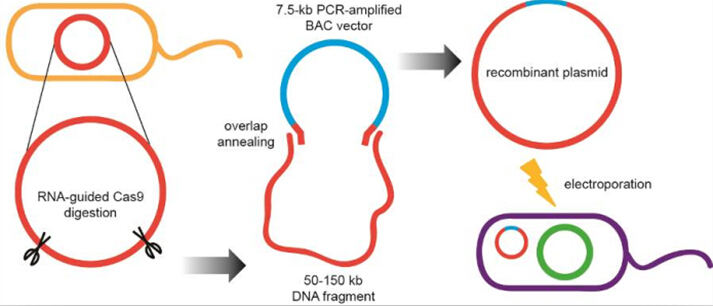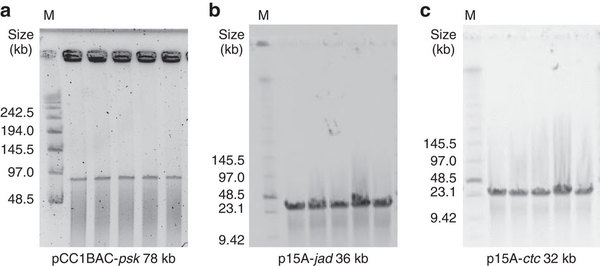Cloning large gene clusters (encoding the enzymes for drugs or other high-added-value biomolecules) from bacterial and fungal genome is a key step in the research of functional genomics research. Traditional PCR-based or BAC library-based cloning methods are often limited by the sequence length and mutations, as well as laborious and time-consuming. So it is crucial to develop a quick and easy method to directly clone the desired large fragments from genomes.
Recently, a research group led by Dr. LOU Chunbo at the Institute of Microbiology, Chinese Academy of Sciences (IMCAS) and his collaborators at Tsinghua University and Tel Aviv University developed a simple but effective method for the targeted cloning of large gene clusters by using CRISPR–cas9 system. In their one-step cloning method, target gene cluster is digested by RNA –guided Cas9 at designated target sites, and then ligated to the cloning vector by Gibson assembly. Using this method, they successfully cloned the bacillaene-producing psk gene cluster from Bacillus subtilis, jadomycin-producing jad gene cluster from Streptomyces venezuelae and the chlortetracycline-producing ctc gene cluster from S. aureofaciens. This method has great potential to uncover the new anti-tumor and anti-bacterial drugs from a variety of Streptomyces and fungus.
This method has been published online in Nature Communications in September 2015. Article link: http://www.nature.com/ncomms/2015/150901/ ncomms9101/full/ncomms9101.html.

Figure1: One-step large-gene-cluster cloning by CATCH.

Figure 2: Cloning large gene clusters from different bacteria.
